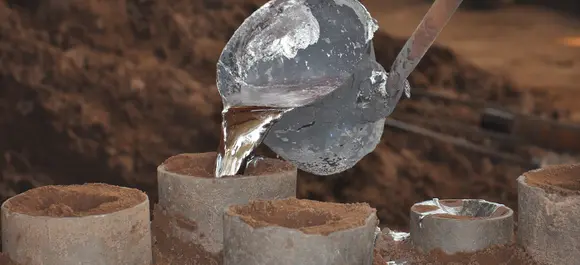Mobile:+86-311-808-126-83
Email:info@ydcastings.com
aluminum casting
Aluminum Casting A Versatile Manufacturing Process
Aluminum casting is one of the most important and widely-used manufacturing processes in the foundry industry. It involves pouring molten aluminum into a mold to create a specific shape, which can be further processed or utilized in various applications. Due to its unique properties, such as low density, high strength-to-weight ratio, and resistance to corrosion, aluminum casting has become a popular choice across numerous sectors, including automotive, aerospace, consumer goods, and machinery.
The Aluminum Casting Process
The aluminum casting process can be divided into several key steps. Firstly, aluminum alloys are prepared. The specific alloy chosen will depend on the desired properties of the final product. Common alloying elements include copper, magnesium, silicon, and zinc. The selection of these elements allows manufacturers to tailor the characteristics of the aluminum to meet specific application requirements.
Once the alloy is prepared, it is melted in a furnace at high temperatures, typically around 660 degrees Celsius (1220 degrees Fahrenheit). This molten aluminum is then poured into pre-designed molds, which can be made from various materials, including sand, metal, or ceramic. The choice of mold material significantly influences the surface finish, dimensional accuracy, and overall quality of the finished casting.
There are several methods of aluminum casting, including sand casting, die casting, investment casting, and permanent mold casting. Among these, sand casting is one of the most common and cost-effective methods, suitable for both small and large production runs. Die casting, on the other hand, is preferred for mass production due to its speed and precision.
Advantages of Aluminum Casting
Aluminum casting offers numerous benefits that make it an attractive option for manufacturers. One of the primary advantages is the lightweight nature of aluminum, which significantly reduces the overall weight of the cast products, leading to energy savings, especially in industries like automotive and aerospace. In transportation, for instance, lighter components can improve fuel efficiency, reducing environmental impact.
aluminum casting

Moreover, aluminum’s excellent corrosion resistance makes it suitable for various applications, particularly in harsh environments. Unlike other metals, aluminum forms a natural oxide layer that protects it from oxidation and deterioration, ensuring a longer lifespan for the products produced.
The versatility of aluminum casting also allows for intricate designs and complex geometries that would be difficult or impossible to achieve through other manufacturing methods. This capability enables engineers and designers to innovate and create lightweight components with enhanced performance characteristics without compromising structural integrity.
Challenges in Aluminum Casting
Despite its many advantages, aluminum casting is not without its challenges. Controlling the quality of the molten metal and preventing defects such as porosity or shrinkage can be complicated. These issues often arise from factors such as improper mold design, incorrect pouring temperature, or inadequate cooling rates. Therefore, careful monitoring and control of the casting process are essential to ensure high-quality outcomes.
Additionally, the recycling and sustainability aspect of aluminum casting is gaining attention. While aluminum is highly recyclable and can be reused without losing its properties, the energy-intensive process of primary aluminum production raises concerns over environmental impact. Manufacturers are increasingly focusing on improving energy efficiency and reducing emissions throughout the casting process to promote sustainable practices.
Conclusion
Aluminum casting plays a crucial role in modern manufacturing, offering an effective solution for producing lightweight, durable, and corrosion-resistant components. Its wide range of applications across various industries underscores the versatility and importance of this process. As technology advances, manufacturers continue to innovate and address challenges, ensuring that aluminum casting remains a competitive and sustainable choice for years to come. Whether used in automotive parts, aerospace components, or everyday consumer goods, aluminum castings represent the intersection of functionality, efficiency, and creativity in engineering design.
-
Understanding Metal Casting TechniquesNewsApr.02,2025
-
Understanding Exhaust Manifolds for Enhanced Engine PerformanceNewsApr.02,2025
-
The World of Metal FabricationNewsApr.02,2025
-
Key Components for Pump and Turbo EfficiencyNewsApr.02,2025
-
Essential Tools for Automotive Maintenance and RepairNewsApr.02,2025
-
Durable Valve Components for Effective Water ManagementNewsApr.02,2025











